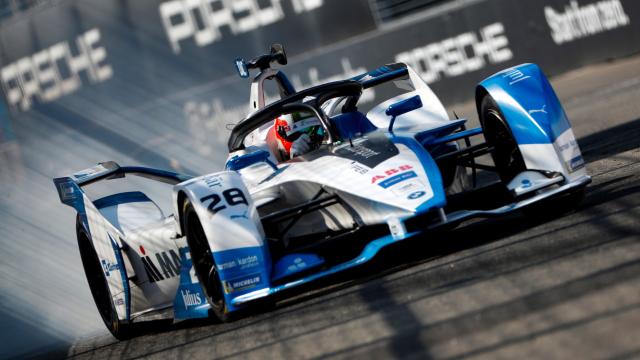Back in October, we wrote about Formula E’s intention to reintroduce pit stops to the series’ races. Unlike the initial battery swap stops, however, these new ones would involve actually re-charging the battery. Now, FIA documents reveal that these stops would ideally remain under 30 seconds, and it’s inviting manufacturers to submit design proposals.
The FIA has released tender invitations—or, basically, it’s asking manufacturers for their chassis, battery, and tire designs—for three seasons of Gen3 cars, which would hit the track from 2022-2025, Autosport reports. Those tenders are due by March 31, 2020 with final selections being made in June, the initial models being developed by October, and crash testing taking place in August of 2021.
But the really interesting stuff here comes in the form of the battery that will be utilised for the Gen3 car. The document explains that pit stops will once again become a feature of FE races, but this time with fast-charging batteries. The goal is to have a battery that can be fully recharged in 45 minutes—or, enough time to recharge between race day sessions—with a fast-charging option that can provide more power within 30 seconds.
However, it is currently unclear if that 30 second time limit is supposed to charge the whole battery, or if it is intended to provide a boost in battery power without actually fully recharging it. It also unclear if pit stops will be mandatory, or if they’ll be optional for cars that desperately need the power. Those details will likely emerge in the near future.
The tender invitation specifies two different technology scenarios to achieve different power goals. From Autosport:
In scenario A, the maximum race power would be 300kW and 350kW with attack mode or fanboost activated, and 350kW in qualifying.
Scenario A rear maximum regen power is 350kW and the front is 250kW – in scenario B this is 250kW and 200kW.
Scenario B maximum race power is 250kW, and 300kW in attack mode/fanboost and qualifying. The front powertrain kit “will be used for the sole purpose of regenerating energy during braking and will be common to all cars”.
…
Standard charging shall be performed at 80kW, with fast-charging performed at either 450kW or 600kW, “depending on the battery system specifications” of the successful battery supply applicant.
New, too, will be a front powertrain, bespoke charging equipment, and hydraulic brakes on the front wheels. Basically, there’s going to be a lot of technology advancement coming in the near future, and it all sounds pretty damn cool. There’s also a budget cap per completed car: €340,000 (about $554,465), with spare parts costing no more than 135 per cent of that amount. That would be €459,000 (or $745,610) in extra bits lying around.
But it’s those pit stops that are the most fascinating. In terms of technology development, Formula E is one of the most groundbreaking series of this decade—and by introducing fast charging technology as part of its race format, it looks set to maintain its relevance well into the 2020s.
